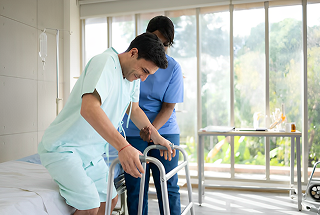Many individuals expect physical therapy sessions to be agonizing. Whether requiring rehabilitation to strengthen the core muscles necessary for lumbar stability, restore natural function to a shoulder that has recently been repaired surgically, or improve knee movement and stability following an injury, countless people anticipate the process to be painful.
While the course of therapy may be uncomfortable, tiresome, and lengthy, it should never lead to symptoms becoming worse.
It is necessary to properly identify what constitutes worse. An increase in the subjective complaints reported by a patient during or following a procedure does not necessarily qualify as worse. During the mechanical evaluation of the spine, it is common that the client report an increase in symptoms during the testing, only to find relief towards the end of the assessment.
For the exacerbation to be classified as worse, the person would need to leave the therapy session with elevated symptoms. In other words, an individual should never leave a physical therapy session feeling worse than upon arriving.
Once the course of treatment is established, evidence dictates the progression should follow a more rigorous therapeutic framework. The client should rarely experience increased symptoms during the performance of exercise.
Unfortunately, there are times when a client does experience elevated levels of discomfort that persist throughout the rehabilitative session. Many factors contribute to this unfavorable outcome: some beyond the control of the therapist.
In order to appropriately gauge the quality of the treatment, the unfortunate soul that leaves the clinic feeling worse should report the exacerbation to the therapist at the next visit, if not sooner. The physical therapist should respond by reevaluating the prior session and making changes geared towards avoiding the provocation of increased symptoms.
Sometimes, therapy is not the answer. Demonstrating an intolerance to treatment or failing to make substantial progress are common indicators that a patient’s problems may not be mechanical and necessitate another type of intervention.
Repeatedly experiencing an increase in symptoms and not making noticeable physical gains may also be the product of substandard care. Every effective rehabilitative program should include the following:
- The incorporation of exercises that are specifically tailored to fit the physical problem(s).
- The establishment of an appropriate home exercise program within the first two visits.
- A gradual and logical progression of the exercises completed in the clinic as well as at home.
Any therapeutic treatment plan from a physical therapist or chiropractor that does not include exercise or movement is inherently flawed. The vast majority of medical research on the matter has all but proven that the completion of appropriately selected exercises or movements in specific directions leads to the best rehabilitative results.
While the correct exercises and movements may initially cause discomfort, the client should notice an improvement in their overall condition before finishing the session. Soreness in other areas may accompany a good exercise program, but even that side effect should be kept to a minimum in order to facilitate steady improvement.
The establishment of an adequate home exercise program promotes accelerated positive results. It is not uncommon for the home program to be easier than the exercises completed in the clinic due to a multitude of reasons. Besides a possible difference in the equipment an individual may have access to at home, prescribing a relatively lighter exercise program away from the clinic reduces the likelihood of suffering increased symptoms following an independent workout.
In addition to promoting a faster return to a premorbid level of performance, a home exercise program also encourages a client to take an active role in healing. An effective program may also lead to promoting an increasingly active lifestyle that will reduce future dysfunctions.
The exercises and movements recommended by a therapist should constantly evolve. It makes sense that a simplistic home program that initially led to better function may not be as effective once the individual is able to operate at a higher level. Exercises and movements change in conjunction with the advancements experienced by the person.
It is important that an individual completing rehabilitation communicates the nature of their ever changing condition to the treating therapist. Symptoms should never be worse throughout the course of treatment. Rather, a client should experience gradual and noticeable improvements throughout the course of therapy.





